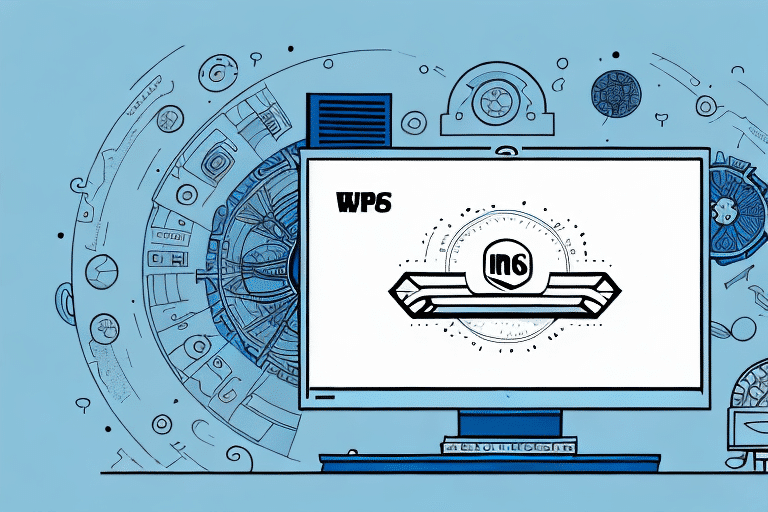How to Set Up Negotiated Rates in UPS WorldShip
Are you tired of paying high shipping rates for your business needs? Negotiated rates with UPS WorldShip could be the solution for you. In this comprehensive guide, we'll cover everything you need to know about setting up negotiated rates in UPS WorldShip, from understanding their importance to avoiding common mistakes. Let's get started.
Understanding the Importance of Negotiated Rates in UPS WorldShip
Every business owner knows that shipping costs can quickly add up. However, by negotiating rates with UPS WorldShip, you can save money and increase your bottom line. Negotiated rates are customized shipping prices determined by your shipping volume, destinations, and other factors. These rates can be significantly lower than the standard rates offered by UPS, allowing your business to save substantial amounts of money over time.
Another benefit of negotiated rates is the increased flexibility in shipping options. For example, you may access faster shipping options or receive discounts on specific types of shipments. This flexibility is especially beneficial for businesses that frequently ship time-sensitive or high-value items.
Negotiating rates with UPS requires providing detailed information about your shipping volume and other relevant factors. Collaborating with UPS to determine the best rates tailored to your business needs can lead to significant cost savings and enhanced shipping efficiency.
How to Negotiate Rates with UPS for Your Business Needs
The first step to setting up negotiated rates is to contact UPS directly through their website or by phone. You'll need to provide UPS with information about your business, such as your shipping volume, destinations, and the types of goods you'll be shipping. Based on this information, UPS will offer negotiated shipping rates tailored to your requirements.
Negotiated rates with UPS are not static. It's crucial to regularly review your shipping volume and destinations to ensure you continue receiving the best possible rates. Additionally, UPS may adjust their rates periodically, so staying informed about any changes that could affect your business is essential. Regularly reviewing and adjusting your negotiated rates with UPS can help save your business money on shipping costs and improve your bottom line.
Exploring the Different Types of UPS Shipping Rates
Before negotiating rates with UPS, it's important to understand the various shipping rates they offer. UPS provides a range of shipping methods, including ground, air, and international services. Each method has its own set of rates, which can vary based on factors such as weight, distance, and delivery time. By understanding these rates and selecting the right shipping method for your business needs, you can save money and optimize your shipping process.
- Ground Shipping: Typically the most cost-effective option for domestic shipments, suitable for non-urgent deliveries.
- Air Shipping: Offers faster delivery times, ideal for urgent or time-sensitive shipments.
- International Shipping: Provides options for shipping goods internationally, with rates varying based on destination and customs requirements.
When choosing a UPS shipping method, consider the level of tracking and insurance offered. Ground shipping may provide limited tracking and insurance options, while air and international shipping often include more comprehensive coverage. Balancing the cost of additional services against the potential risk of lost or damaged packages is essential.
Additionally, UPS offers discounts based on shipping volume or frequency. Exploring these programs and negotiating rates with UPS can help you find the most cost-effective shipping solutions for your business.
The Step-by-Step Process for Setting Up Negotiated Rates in UPS WorldShip
- Contact UPS: Reach out to UPS through their website or customer service to express your interest in negotiating rates.
- Provide Business Information: Share details about your shipping volume, destinations, and types of shipments.
- Receive Proposed Rates: UPS will analyze your information and propose negotiated rates tailored to your needs.
- Review and Finalize: Review the proposed rates, negotiate terms if necessary, and finalize the agreement.
- Set Up in WorldShip: Log in to your UPS WorldShip account, navigate to the "Shipping" tab, select "Preferences," and then "Rate and Service Selection" to enter your negotiated rates for each service level and package type.
Following these steps carefully ensures that your negotiated rates are properly applied to each shipment, maximizing your cost savings.
Tips and Tricks for Securing the Best Negotiated Shipping Rates with UPS
- Consolidate Shipping Volume: Focus your shipping to certain destinations to qualify for lower rates.
- Use a Shipping Consultant: Collaborating with a shipping consultant or third-party logistics provider can help negotiate more advantageous rates with UPS.
- Leverage Discounts and Promotions: Take advantage of UPS discounts for frequent shippers and utilize their online shipping tools. Stay informed about UPS promotions for specific shipping services or destinations.
- Optimize Packaging: Reduce the size and weight of your shipments by optimizing packaging. Utilize UPS’s packaging options, such as flat-rate boxes, to save on shipping costs.
Implementing these strategies can help you secure the best possible negotiated shipping rates with UPS.
Understanding the Fine Print: Terms and Conditions of Negotiated Rates with UPS
Before finalizing your negotiated rates with UPS, carefully review the terms and conditions of the agreement. Understanding details such as shipment volume requirements, payment terms, and rate adjustments is crucial to ensure that the rates meet your business needs.
Negotiated rates are subject to change based on factors like shipping volume fluctuations and changes in UPS's pricing structure. Maintaining open communication with UPS and keeping them informed about your shipping volume and other relevant factors can help you stay ahead of any rate adjustments.
Additionally, understanding the liability and insurance coverage provided by UPS is essential. While UPS offers basic coverage, it may not be sufficient for all types of shipments. Consider purchasing additional insurance to fully protect your goods against loss or damage.
Common Mistakes to Avoid When Setting Up Negotiated Shipping Rates in UPS WorldShip
Several common mistakes can undermine the effectiveness of negotiated rates in UPS WorldShip:
- Failing to Update Shipping Settings: Ensure that your shipping settings in WorldShip are accurately updated to reflect your negotiated rates.
- Not Applying Rates to All Shipments: Make sure that negotiated rates are consistently applied to all relevant shipments to maximize savings.
- Ignoring Shipping Volume Changes: Regularly monitor and adjust to changes in your shipping volume to maintain optimal rates.
- Poor Communication: Clearly communicate negotiated rates to all relevant parties within your organization to prevent errors and ensure consistent application.
By avoiding these mistakes and adhering to best practices, you can ensure that your negotiated rates are effectively utilized, leading to significant cost savings.
The Benefits of Using Negotiated Shipping Rates in UPS WorldShip for Your Business
Utilizing negotiated shipping rates in UPS WorldShip offers numerous benefits for your business:
- Cost Savings: Lower shipping costs directly increase your profits, allowing you to reinvest in other areas of your business.
- Improved Shipping Efficiency: Streamlining your shipping process with tailored rates can enhance overall operational efficiency.
- Enhanced Customer Experience: Faster and more reliable shipping options can improve customer satisfaction and loyalty.
- Real-Time Tracking: Access to real-time shipment tracking allows you to keep customers informed and quickly address any issues that arise.
- Inventory Management: Accurate and timely deliveries help maintain optimal inventory levels, reducing the risk of stockouts and excess inventory.
These benefits collectively contribute to a more efficient and profitable business operation.
Comparing Your Options: Choosing the Right Shipping Solution for Your Business Needs
While negotiated rates with UPS are advantageous for many businesses, it's important to explore other shipping solutions to ensure you're getting the best fit for your needs:
- Third-Party Logistics Providers (3PLs): These providers can offer additional shipping options and potentially better rates through their established relationships with carriers.
- Alternative Carriers: Consider other carriers like FedEx or USPS to compare rates and services.
- Integrated Shipping Platforms: Utilize platforms that integrate multiple carriers, allowing you to choose the most cost-effective option for each shipment.
When comparing your options, consider factors such as shipping volume, destinations, delivery speed, and cost. By thoroughly evaluating your shipping needs and exploring various solutions, you can select the best shipping strategy to support your business objectives.
Now that you have all the information needed to set up negotiated rates in UPS WorldShip, it's time to take action. By carefully following the step-by-step process, avoiding common mistakes, and negotiating the best rates with UPS, you can achieve significant cost savings and enhance your business operations.
Additionally, consider the speed of delivery when choosing a shipping solution. If your business requires fast delivery times, explore expedited shipping options or same-day delivery services. Conversely, if your customers are willing to wait a few extra days, standard shipping methods can offer cost savings.
Finally, take into account the size and weight of your packages. Some carriers have restrictions that could impact shipping costs and delivery times. By carefully considering these factors and comparing your options, you can choose the shipping solution that best aligns with your business needs.








